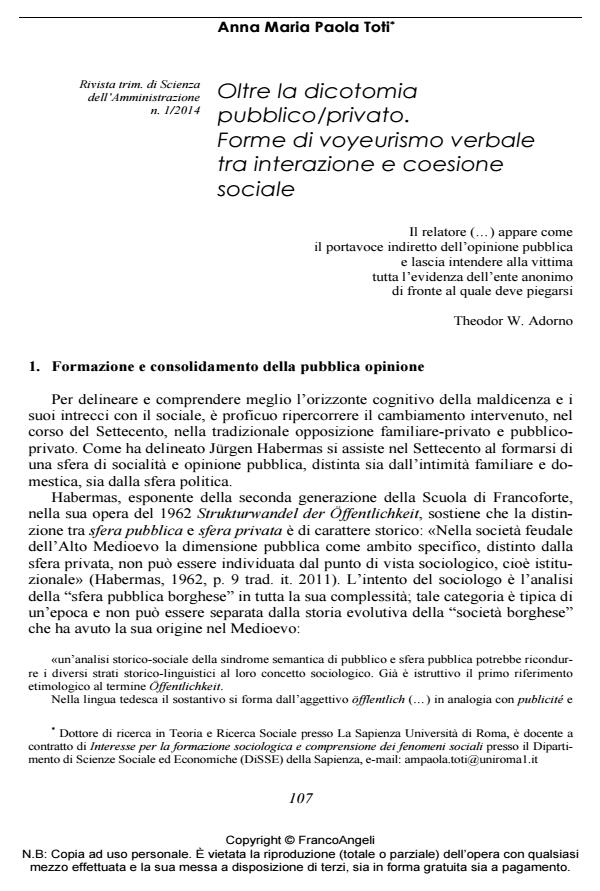Beyond the public/private dichotomy. Verbal voyeurism as a form of social cohesion and interaction
Journal title RIVISTA TRIMESTRALE DI SCIENZA DELL’AMMINISTRAZIONE
Author/s Anna Maria Paola Toti
Publishing Year 2014 Issue 2014/1
Language Italian Pages 14 P. 107-120 File size 870 KB
DOI 10.3280/SA2014-001005
DOI is like a bar code for intellectual property: to have more infomation
click here
Below, you can see the article first page
If you want to buy this article in PDF format, you can do it, following the instructions to buy download credits

FrancoAngeli is member of Publishers International Linking Association, Inc (PILA), a not-for-profit association which run the CrossRef service enabling links to and from online scholarly content.
Backbiting, gossiping and nattering are social practices, collective behaviors, tranche de vie which describe a certain socio- historical context and mentality and which go beyond the dichotomy public/ private. These social phenomena are to all intents and purposes forms of verbal voyeurism; they are universal pulsions and a sort of discursive intrusion through which the private sphere becomes part of the public one. The study and analysis of the flow of verbal communication is extremely important for the social sciences because it favors the understanding of the hidden tissues of intersubjective relationships and the articulate reconstruction of the different forms of backbiting with their tight connection to social reality and daily life.
Keywords: Social interaction, collective behavior, public opinion
Anna Maria Paola Toti, Oltre la dicotomia pubblico/privato. Forme di voyeurismo verbale tra interazione e coesione sociale in "RIVISTA TRIMESTRALE DI SCIENZA DELL’AMMINISTRAZIONE" 1/2014, pp 107-120, DOI: 10.3280/SA2014-001005